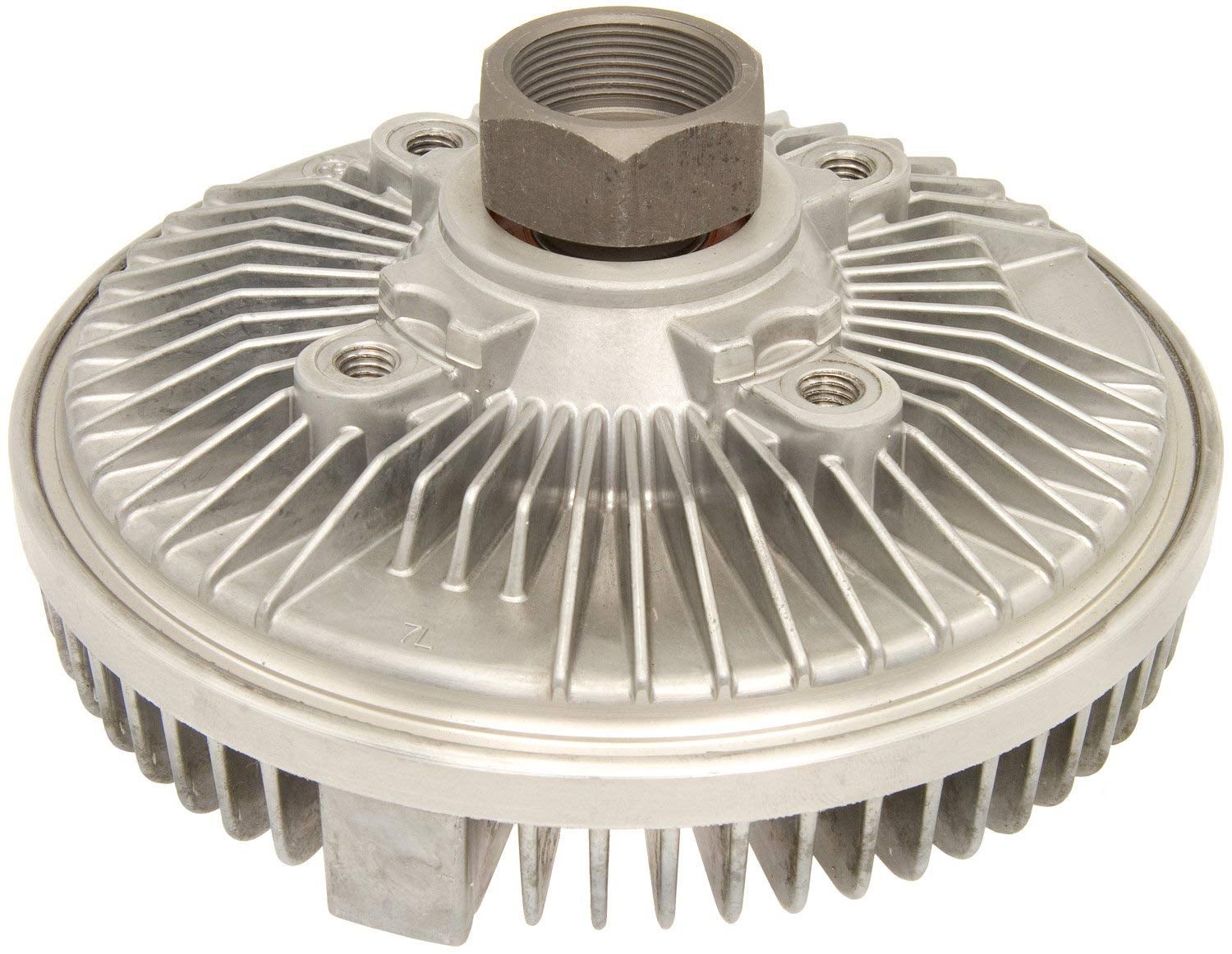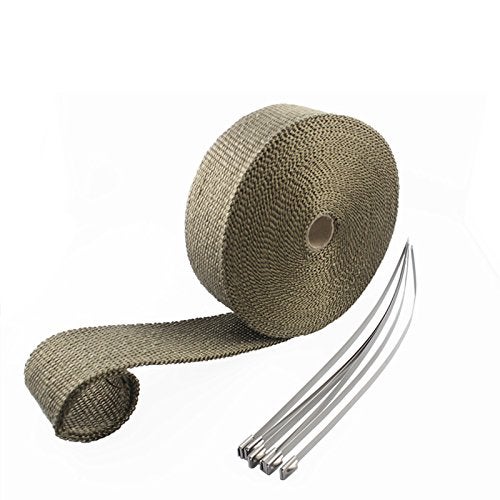 "Akio Ohtori - RIP Oppo" (akioohtori)
"Akio Ohtori - RIP Oppo" (akioohtori)
07/02/2018 at 13:37 • Filed to: Disco Inferno
 2
2
 14
14
 "Akio Ohtori - RIP Oppo" (akioohtori)
"Akio Ohtori - RIP Oppo" (akioohtori)
07/02/2018 at 13:37 • Filed to: Disco Inferno |  2 2
|  14 14 |
I got some fun alone time with the Discovery this weekend, and made a few uhh...
discoveries
findings. I know it sounds weird to have “alone time” with a car, but usually when I am in it I am going from A to B without a lot of spare time. Saturday was lazy and I was mildly hungover, so I kinda just puttered around town and then hit Sonic for some hangover cure.
Since replacing the head gaskets, cooling system, and basically anything else I could get my hands on on the Land Rover, I’ve still been struggling with higher-than-I’d-like underhood temps. Specifically my UltraGauge used to read about 210F, the point at which the aux fan kicks in, all the time. Part of me still thinks/ thought this is due to a problem with the wiring. When I hit the engine with a infrared gauge it reads much lower than indicated on the OBD2.
Still, better safe than sorry, so I went ahead and replaced the thermostat with a Land Rover genuine “warm weather” thermostat. This helped dramatically and I started seeing temps of around 195 when driving, warmer than expected, but certainly closer to where I wanted to be.
“ So... what was that about Sonic?” You may ask.
Oh right. So I’d noticed when I was at the ORV park the temps tend to creep up at low speed. A little rise is expected, but things were really getting hot and heavy out there.
“This... still doesn’t have anything to do wit-” I’M GETTING THERE!
So sitting at Sonic was my first chance in a long while to just sit still and see where the engine temps go. Unfortunately , they went from 205F, my not-moving idle temp , to 220F over the course of 10-15 min. Not... great.

Earning its nickname.
Now, I admit, I don’t know what is “normal” for this vehicle. The temperature gauge is software smoothed to a fault and this is my first time with a digital gauge. Still, 15F seems like a helluva climb just sitting around.

Also, to its credit, the fan roar was pretty distinct when I was pulling away, further indicating that this might be normal.
That said, this temperature creep is a pretty classic symptom of a fan clutch on the way out. I did test it when I ha d it off for the head gaskets and it seemed fine, but now it is literally the only old component in the cooling system. HammerFistHeadPunch (that’ s right... right?) did a good write up on this a while back:
!!! UNKNOWN CONTENT TYPE !!!
Ok... so out with the old, in with the Chinese knockoff, as the saying goes.

\ Reading through the “How to Live With Your Land Rover Discovery I & II On a Budget” book, they suggest using a host of other techniques to further lower underhood temps, including exhaust wrap. Actually, oddly, they suggest using the wrap on the wiring loom, but I may try it on the headers.
The downside of this stuff appears to be it can cause the exhaust to rust. Not sure how, but that is, apparently, a common complaint. Whatever. I’ll probably get frustrated after the first 1 or 2 wraps and throw the whole roll in the spare parts bin anyway.
Bonus round! I left my rear sunroof open for 12 hours during a massive downpour. I’m actually impressed how much water got in the car and that the water made it all the way to the driver seat.
And my “impressed” I mean “annoyed”.
Oh well, temps the next couple of days are in the high 90s, so it should dry out in short order.
 benjrblant
> Akio Ohtori - RIP Oppo
benjrblant
> Akio Ohtori - RIP Oppo
07/02/2018 at 13:46 |
|
Wraps accelerate rust because 1) heat is a catalyst and trapping more of it makes things happen more quickly (see catalyst) and 2) the wrap is not weather/dust tight so it can trap sediments like sand and salt close to the exhaust which also contribute to rust either chemically or by abrading the coating on the exhaust.
A wrap seems like a quick fix situation. I’d spend more time trying to source the root cause and fixing your inferno there instead of ancillaries that might cause their own problems down the line.
 adamftw
> Akio Ohtori - RIP Oppo
adamftw
> Akio Ohtori - RIP Oppo
07/02/2018 at 13:48 |
|
Get an electric fan override switch hooked up. I used mine all the time in traffic and it helped a ton.
 BigBlock440
> Akio Ohtori - RIP Oppo
BigBlock440
> Akio Ohtori - RIP Oppo
07/02/2018 at 13:53 |
|
The downside of this stuff appears to be it can cause the exhaust to rust. Not sure how, but that is, apparently, a common complai nt
Moisture gets trapped underneath. Instead of quickly drying out, it stays put allowing more time to oxidize.
 TheBloody, Oppositelock lives on in our shitposts.
> Akio Ohtori - RIP Oppo
TheBloody, Oppositelock lives on in our shitposts.
> Akio Ohtori - RIP Oppo
07/02/2018 at 14:05 |
|
Your temps are actually around what is “normal”, I say normal because that is what everyone else gets. However, for longevity reasons you should work to get it cooler and I know a Chevy HD fan clutch is a common mod for Discos. That or an electric fan you can turn on manually if you need.
 RamblinRover Luxury-Yacht
> TheBloody, Oppositelock lives on in our shitposts.
RamblinRover Luxury-Yacht
> TheBloody, Oppositelock lives on in our shitposts.
07/02/2018 at 14:59 |
|
It’s no help that both GEMS and CUX like to run the engine hot because muh emissions, and later engines
don’t even have heater connections at the back of the intake manifold so the sum total of cooling past the deck is that tiny little passage at the front. “But it’s an aluminium head that can transfer heat to the block and shit”... or at least it could if it had sucktacular tin HGs instead of composites, which... oh.
In summary, post ‘95 engines increase operating temps, and block off heat transfer at the same time as limiting coolant flow and thermally isolating the heads. FUC. KING. GENI. US. Good thing they nixed the four outside head bolts each side (instead of adding four on the inside) and went with higher strength head bolts or we might have been in trouble.

 TheBloody, Oppositelock lives on in our shitposts.
> RamblinRover Luxury-Yacht
TheBloody, Oppositelock lives on in our shitposts.
> RamblinRover Luxury-Yacht
07/02/2018 at 15:37 |
|

 HFV has no HFV. But somehow has 2 motorcycles
> Akio Ohtori - RIP Oppo
HFV has no HFV. But somehow has 2 motorcycles
> Akio Ohtori - RIP Oppo
07/02/2018 at 15:40 |
|
There’s only one reasonable thing to do https://www.jegs.com/i/Harwood/487/1114/10002/-1?CAWELAID=1710657606&CAGPSPN=pla&CAAGID=44693592161&CATCI=aud-224375369591:pla-207769765271&catargetid=230006180039218813&cadevice=m&jegspromo=nonbrand&gclid=CjwKCAjwmufZBRBJEiwAPJ3Lpv3EwwxiPYCON409xSnB85XPH45kIaEHsqVQrXqaoU3bQccdQpfOuRoCZ1UQAvD_BwE
 RamblinRover Luxury-Yacht
> TheBloody, Oppositelock lives on in our shitposts.
RamblinRover Luxury-Yacht
> TheBloody, Oppositelock lives on in our shitposts.
07/02/2018 at 15:58 |
|
The Rover in the Ranchero will be powered by Megasquirt, temp tuned for 165F, put back together with ARP studs, set up with a custom pair of intake manifolds that will *not* neglect the rear deck passages, and will be cooling with two three core radiators with electric fans, using coated exhaust headers, and an adapter plate to a bigger water pump .
If it still finds ways to overheat that aren’t related to a liner slip, I will bend over backwards and eat my own ass.
 TheBloody, Oppositelock lives on in our shitposts.
> RamblinRover Luxury-Yacht
TheBloody, Oppositelock lives on in our shitposts.
> RamblinRover Luxury-Yacht
07/02/2018 at 16:13 |
|
Probably better off just deleting the thermostat and running free and clear.
 Akio Ohtori - RIP Oppo
> HFV has no HFV. But somehow has 2 motorcycles
Akio Ohtori - RIP Oppo
> HFV has no HFV. But somehow has 2 motorcycles
07/02/2018 at 16:15 |
|
Haha you joke, but apparently a vented hood is another option.
 RamblinRover Luxury-Yacht
> TheBloody, Oppositelock lives on in our shitposts.
RamblinRover Luxury-Yacht
> TheBloody, Oppositelock lives on in our shitposts.
07/02/2018 at 16:39 |
|
Going to be two thermostats with comically low open temps
. Either automotive style or motorcycle, haven’t decided yet and will depend on what I’m doing for the manifolds. Either way, a lot more open area when open, so much better flow than just one, and makes plumbing the two radiators simpler.
 BJ
> Akio Ohtori - RIP Oppo
BJ
> Akio Ohtori - RIP Oppo
07/02/2018 at 16:42 |
|
I read this post and all the replies up to now, and I’m not terribly bothered by it... that’s a bad thing, right?
Right?
.
Right?
.
.
.

 HammerheadFistpunch
> Akio Ohtori - RIP Oppo
HammerheadFistpunch
> Akio Ohtori - RIP Oppo
07/02/2018 at 19:04 |
|
You know what some Arizona Cruiser guys do (and Im tempted to try) is to put a few washers on the hood hinge so the back of the hood has a 3/4 inch gap to ask as a heat extractor. They say its pretty effective. That being said fixing the root cause it job one here.
 HammerheadFistpunch
> Akio Ohtori - RIP Oppo
HammerheadFistpunch
> Akio Ohtori - RIP Oppo
07/02/2018 at 19:10 |
|
Just FYI, My heat situation is MASSIVELY improved with a new radiator. I still get up to about 199 under load and all the way up to 209 idling in heat but it quickly goes back down. I don’t have an Aux kicker fan though so thats to be expected. Im thinking about getting one for traffic and wheeling. You can always test your fan clutch but getting the engine hot and then parking it and trying to stall the fan with a rolled up magazine or something that isn’t your hand. If it stalls easy its a dying clutch.